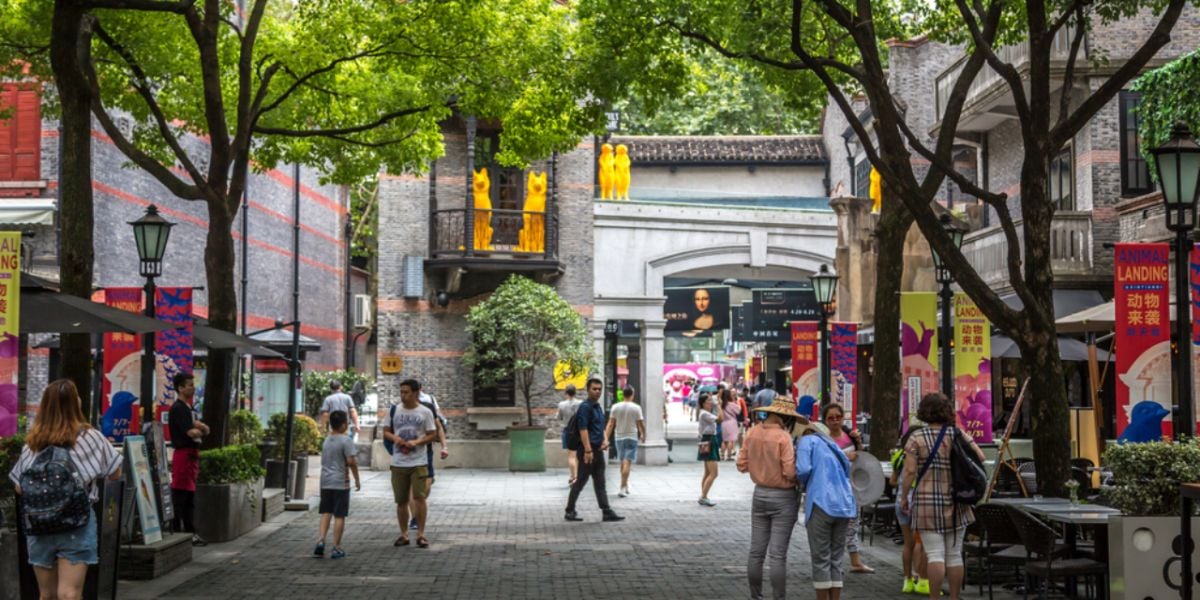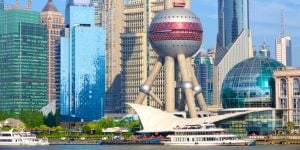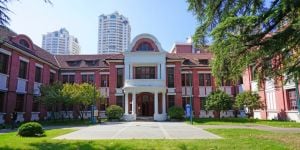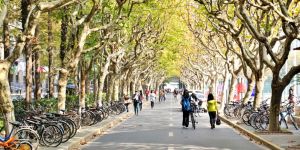
Spreading over 6,341 square kilometres and home to over 25 million people, Shanghai can get overwhelming especially if you are new to the city and looking for a place to call home. In this article, we offer you a brief overview of Shanghai districts and neighbourhoods.
While covering a larger area, Shanghai's urban zone measures about 2,643 q and is divided into 16 districts.
The city's downtown is not one homogeneous area and consists of several small districts, which, in turn, are subdivided into neighbourhoods. Shanghai's central districts include Huangpu, Xuhui, Changning, Yanhpu, Hongkou, Jing'an, and Putuo. Below, find a brief overview of Shanghai's main central neighbourhoods.
People's Square (Huangpu district)
Huangpu, also known as Downtown Shanghai, is the city's central district and home to its prime tourist attractions including the Bund, Nanjing Road, the Shanghai Museum, and others. It is also where you will find some of the city's most lively neighbourhoods. People's Square, in particular, is a popular neighbourhood due to relatively low rents and its proximity to the busy nightlife of the Bund. There are lots of local restaurants and street food stalls filling the streets and, if settled here, you will come across a lot of students residing in the area.
Suzhou Creek (Huangpu district)
Suzhou Creek is an interesting neighbourhood to consider especially if you love art and loft-like spaces. Stretching from Tai Lake to the Bund, the neighbourhood had been home to foreign settlements before being turned into an industrial centre. Today, the area is a refreshing blend of plain factory buildings, old colonial architecture and art installations. Suzhou Creek is also home to the M50 district, the centre of the city's contemporary art scene ' which is, in part, why it is developing into a hip residential neighbourhood,
Xintiandi (Huangpu district)
Xintiandi is another excellent fancy shopping and dining area in the centre of Shanghai and, while home to lots of expat-oriented bars and restaurants, it may be a bit lacking in character compared to Suzhou Creek. With that, the area is noted for its beautifully renovated signature Shanghainese architecture, which is a rare sight outside Xintiandi. Settling here will be quite pricey, but you will have all the amenities and a few tourist attractions within your reach.
FFC (Xuhui district)
The Former French Concession is, probably, the trendiest neighbourhood in Shanghai. Once the main residential area of the French, the FFC of today is a quiet, stylish area with tree-lined avenues and some of the city's best bars and restaurants. Here, bikes and electric scooters are the main ways of transportation going down the narrow streets. FCC is especially popular with expats, and it will be easier to get around the area even without the knowledge of Chinese (compared to other neighbourhoods). Most residential properties in the area are renovated old houses, and you will not find too many high rises here ' with that, rent prices are notably high.
Gubei (Changning district)
Often referred to as 'Little Tokyo' or 'K-Town', Gubei is another one of Shanghai's central neighbourhoods situated not far from Hongqiao Airport. The area is known for its large Japanese and Korean population and is also a relatively favourite dining and nightlife spot.
The neighbourhood is primarily popular with older residents and families ' there is also a good selection of international schools in the area.
Zhongshan Park (Changning district)
For those searching for greener pastures (literally), Zhongshan Park neighbourhood (as the name suggests) lets you settle close to one of Shanghai's most beautiful park areas. Zhongshan Park is not as expat-oriented as some of the other central neighbourhoods in the city and comes with more of a local flare. It has a busy metro stop, Zhongshan Gongyuan Zhan, which is an interchange station between several metro lines.
Wujiaochang (Yangpu district)
If you are looking for a younger crowd, Wujiaochang neighbourhood, though not as popular as other expat areas, may be quite a suitable match. Home to some of the city's most prominent universities, it has all the necessary amenities including a restaurant and bar area frequented by local and international students.
Hongkou district
Hongkou may not be a typically foreign neighbourhood as you will probably not find too many expats living here. Hongkou would be a great place to get to know ' the real China' and watch the transformation of old traditional housing into modern high rises that are quickly taking over the space. Some of the main advantages of the area include an abundance of cheap local restaurants, less expensive rent and some interesting landmarks like the Art Deco building.
Jing'an district
Jing'an is one of Shanghai's central districts. For those who are not willing to pay the steep price for living in a purely 'expat neighbourhood', Jing'an may offer the perfect middle ground. Once one of the city's international settlements, the neighbourhood offers more of a Western feel with its abundant colonial architecture as well as bars and restaurants frequented by expats. Here, you will also find Jing'an temple, a popular tourist attraction and less exorbitant rent prices compared to the FCC.
Pudong district
Venturing a bit further from the city centre, there is the Pudong New Area. It is one of the largest districts in Shanghai and one of the newest ones as well. Plus, it is home to the city's main airport. Despite the high concentration of high rises in one part of Pudong, the rest of the district is still under development with several quiet residential areas and more affordable rental options compared to Shanghai's other central neighbourhoods. The area would be especially convenient for families with children thanks to a large number of international schools in the area.
Minhang district
Minhang is one of Shanghai's suburban districts that is closest to downtown. The neighbourhood is a mix of factories and residential areas. It is the only district with territory on both sides of the river with the west bank housing most of the industrial and residential developments. Settling here will be less expensive than in the central neighbourhoods, and there is all the needed infrastructure. The district is connected to the rest of the city via Line 5.
Jiading and Baoshan districts
On the other side of Pudong New Area lie Shanghai's busy industrial districts: Jiading and Baoshan. Baoshan is home to the city's cargo port with the district's skyline dominated by industrial cranes and cargo containers stacked on top of each other. Jiading is primarily an industrial district as well but is well known for some of Shanghai's key tourist attractions like Jiading Old Town and Shanghai International Circuit that hosts Formula One events. Though somewhat remote from the city centre, both districts are connected to downtown by metro.
Even further from the city centre, there are Qingpu, Songjiang, Jinshan, and Fengxian districts. Though located quite far from the city proper, all the areas are connected to Shanghai's downtown by metro.
Chongming is the largest of all Shanghai districts but also the least developed. Consisting of Chongming Island, Changxing Island, and Hengsha Island, it is connected to the mainland by ferries, tunnels and bridge expressways.
Settling in one of Shanghai's central neighbourhoods will definitely be the more convenient option - especially when you are new to the city. Even though rent prices are quite steep, there is a good selection of studios as well as apartment sharing options that could help bring down the expenses.
Shanghai is a very safe city to live in, and there is no significant difference in personal and home security between living in the city centre or its outskirts. With that, general caution should still be exercised when choosing a place to settle: ask your colleagues and acquaintances about your potential future neighbourhood and take a stroll around before making the final decision.
Useful link:
We do our best to provide accurate and up to date information. However, if you have noticed any inaccuracies in this article, please let us know in the comments section below.








